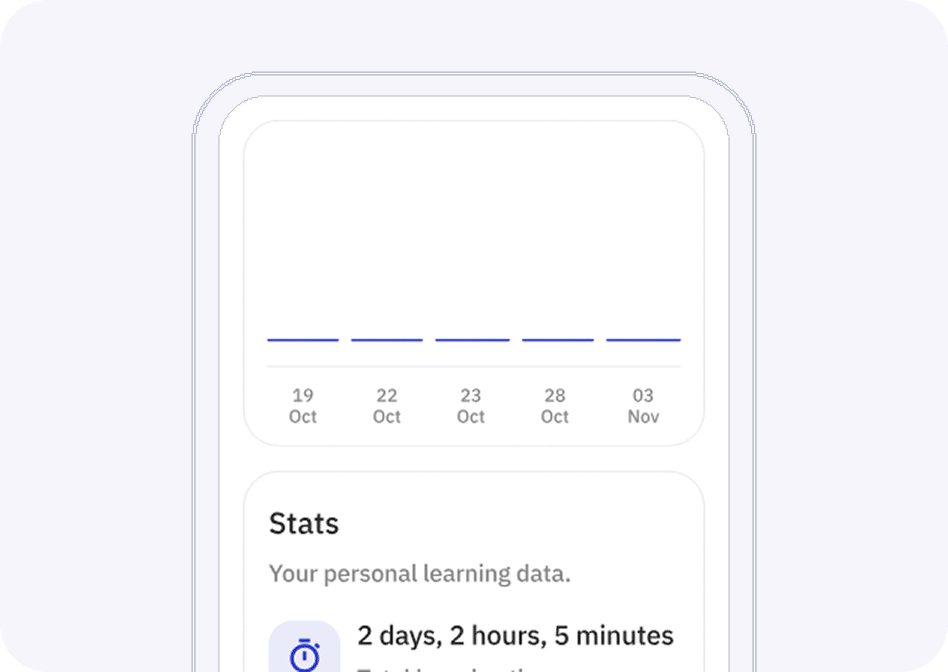Language Learning Applications
In the digital age, educational tools have evolved, becoming more accessible and interactive. Learning applications are at the forefront of this educational revolution, offering a dynamic way to acquire new skills and knowledge anywhere and anytime. Among these, language learning applications like Talkpal AI have made it easier than ever to learn new languages through advanced and user-friendly interfaces. This content explores the most impactful learning applications, emphasizing their features, benefits, and specific uses in the realm of language acquisition.

The talkpal difference

Personalized Education
Every person has a distinct method of absorbing information. Through Talkpal technology, we have the capacity to analyze the study patterns of millions of users at the same time. This data allows us to build highly effective educational structures that are fully tailored to match the specific needs and interests of every student.

Cutting-Edge Technology
Our main goal is to lead the way in providing universal access to a custom-tailored learning journey. We accomplish this by leveraging the most recent breakthroughs in modern innovation to ensure every user benefits from sophisticated tools and AI tutoring.

Making Learning Fun
We have transformed the study process into an entertaining activity. Since maintaining momentum can be difficult in an online setting, we built Talkpal to be incredibly captivating. The platform is so engaging that people often prefer acquiring new language skills with our app rather than playing video games.
LANGUAGE LEARNING EXCELLENCE
The most efficient way to learn a language
Try Talkpal for freeRevolutionizing Education with Learning Applications
1. Overview of Learning Applications
Learning applications have transformed traditional learning methodologies by introducing a level of flexibility and interactivity that textbooks and standard classroom settings struggle to match. Designed to cater to various learning styles and preferences, these apps use engaging content such as videos, quizzes, and interactive exercises to enhance the learning experience. They are particularly effective for busy individuals who need to fit their educational activities around their schedules.
2. The Rise of Talkpal AI in Language Learning
Talkpal AI distinguishes itself as a premier language learning tool by integrating artificial intelligence to personalize the learning journey. Users can practice speaking, listening, reading, and writing in multiple languages at various skill levels. The AI analyzes user responses and adapts the difficulty and content to better suit their progression, making it an exceptionally responsive and effective learning aid.
3. Benefits of Mobile Learning Applications
The convenience of learning on-the-go is a significant benefit provided by mobile learning applications. These apps allow users to study during their commute, on lunch breaks, or even while traveling. This mobility ensures that learners can consistently engage with educational content without being tethered to a specific location or device, greatly enhancing the opportunity for regular practice and faster learning.
4. Interactive Features in Learning Apps
Interactive features such as real-time feedback, gamification elements, and social connectivity enhance learner engagement and motivation. Many language learning applications incorporate games and challenges that not only make learning fun but also competitive in a healthy way. These features encourage regular use and can lead to quicker acquisition of knowledge and skills.
5. Customization and Personalization
One of the most significant advantages of using learning applications like Talkpal AI is the ability to customize and personalize the learning experience. Apps can adjust to individual learning speeds, preferred content areas, and even pronunciation or grammar difficulties. This high level of personalization helps in creating a more effective and enjoyable learning path for each user.
6. Incorporating Multisensory Learning
Effective learning applications incorporate multisensory approaches—visual, auditory, and kinesthetic learning—into their design. This integration helps cater to different learning types and ensures that users are not only reading or listening but also engaging through interaction, which can improve retention rates and make learning languages more intuitive.
7. The Role of AI in Language Mastery
AI technology, as used in Talkpal AI, plays a critical role in transforming passive language learning into an active, immersive experience. By using speech recognition and machine learning algorithms, these apps provide immediate corrections and feedback, mimicking a real-life conversational exchange that is crucial for mastering a new language.
8. Community and Social Learning
Many learning applications feature user communities where learners can connect, share experiences, and practice languages together. This social aspect can significantly boost motivation and provide real-life practice opportunities with feedback from peers, an essential component of effective language learning.
9. Challenges and Limitations
Despite numerous benefits, learning applications do face challenges such as the need for self-discipline and the absence of personalized human mentorship in some cases. Users must be self-motivated and consistent in their usage to achieve significant learning outcomes. Additionally, technical issues such as software bugs or poor user interface design can detract from the overall learning experience.
10. Future Trends in Learning Applications
With technology continually advancing, future learning applications are expected to become even more intuitive and effective. Augmented reality (AR) and virtual reality (VR) are set to offer even more immersive learning experiences, while smarter AI will provide even greater personalization and adaptive learning frameworks. This ongoing innovation promises to further cement the role of learning applications in education.
By providing flexible, engaging, and personalized educational experiences, learning applications like Talkpal AI are not just supplements but rather essential components of modern-day education. Whether for professional development or personal enrichment, they offer a tailored and efficient way to learn new languages and skills in an increasingly globalized world.
The most efficient way to learn a language
Try Talkpal for freeFrequently Asked Questions
How can language learning applications improve language skills?
What are learning applications?
What should I look for in a good learning application?
Can learning applications replace traditional learning methods?







